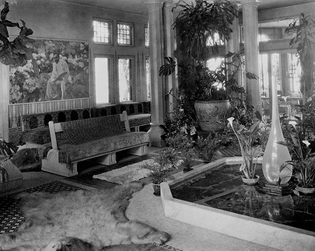Product Description
Louis C. Tiffany / Tiffany Studios Rare Kettle-on-Stand c. 1902


LOUIS C. TIFFANY (1848-1933) USA
TIFFANY STUDIOS New York
Kettle-on-Stand c.1902
Silver on copper with carved teak wood handles and finial in an organic-form and hexagonal shaped kettle-on-stand with burner
Marks: Tiffany Studios, New York (on all three pieces)
Illustrated: The Art of Louis Comfort Tiffany, Donald L. Stover (The Fine Arts Museums of San Francisco, 1981), p. 88, illus. 189 (description on p. 96); Tiffany at Auction, Alastair Duncan (New York: Rizzoli International Publications, 1981) p. 50, pl. 137.
A rare example of a subtle organic-form and hexagonal shaped kettle-on-stand emulating pooling water in a Japanese influenced design by Louis Comfort Tiffany and made by Tiffany Studios
H: 10 1/2″ x D: 8″ x W: 9″
Louis C. Tiffany / Tiffany Studios Rare Kettle-on-Stand c. 1902
Ifugao Tribe Northern Luzon, Philippines
Side table/cabinet circa 1940.
Solid hardwood or ebony with an adzed surface, interior shelf.
H: 19” x W: 15” x D: 12”
SOLD
